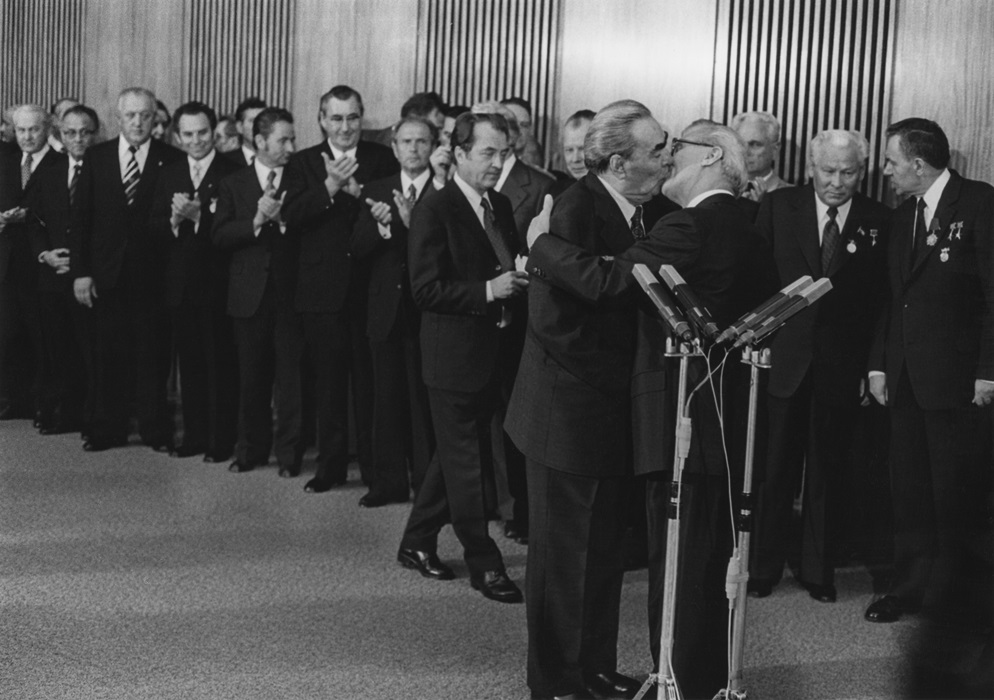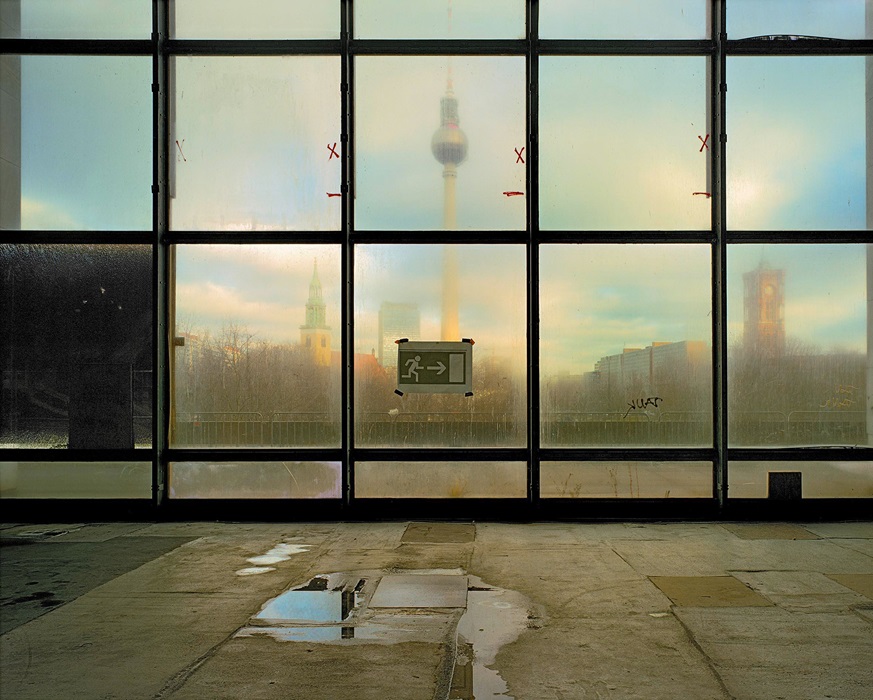The Helmut Newton Foundation is celebrating its 20th anniversary in June 2024 with the group exhibition “Berlin, Berlin”, which also pays homage to the city of Newton’s birth. In autumn 2003, the photographer decided to transfer parts of his archive to Berlin after establishing the foundation named after him, which was housed in the former Landwehrkasino at Zoologischer Garten station and opened in June 2004. From that station, Helmut Neustädter, as a Jew constantly threatened with deportation, left Berlin in a hurry at the beginning of December 1938 and returned 65 years later as the world-famous photographer Helmut Newton. Since then, the Helmut Newton Foundation, together with the Art Library, has run the historic building under the name “Museum of Photography”.
Image above: Harf Zimmermann Palast der Republik, Berlin 2005 © Harf Zimmermann, courtesy Collection de Gambs
Helmut Newton trained in Berlin-Charlottenburg from 1936 to 1938 with the legendary photographer Yva, whom he followed in his later work in the three genres of fashion, portrait and nude. After stints in Singapore and Melbourne, Newton’s real career began in Paris in the early 1960s; during this time he also regularly returned to Berlin to photograph for fashion magazines in particular, including Constanze, Adam and Vogue Europe. In the exhibition, we encounter Newton’s models at the Brandenburg Gate, even before the Wall was built, and in 1963 he realised a “Mata Hari spy story” around the Berlin Wall with Brigitte Schilling as a fashion picture series, which caused quite a stir. In 1979, he was commissioned by German Vogue, which had just returned to the magazine market, to follow in the footsteps of his childhood and youth in West Berlin and visualise current fashion; the result was a multi-page portfolio entitled “Berlin, Berlin!”, which was adopted for this anniversary exhibition. He later produced cover stories for Condé Nast Traveler magazine (1987), Zeit magazine (1990), Männer Vogue (1991) and the Süddeutsche Zeitung magazine (2001).
Newton’s iconic and lesser-known Berlin images, taken between the 1930s and the noughties, are re-contextualised in the other exhibition rooms, from vintage prints by Yva to journalistic and political photography by Barbara Klemm. In this way, the thematic arc is drawn from the “golden twenties”, into which Newton was born, through the destruction of the war, reconstruction, the building and fall of the Berlin Wall and into the early 21st century.

Yevgeny Chaldei, a Russian-Ukrainian photographer, created iconic images of the battle of the houses around the Reichstag in the last weeks of the war in spring 1945, while Hein Gorny flew over the city the following autumn together with Adolph C. Byers and documented its ruinous state after the end of the war in a series of spectacular aerial photographs. In the late 1950s, the long precarious situation in Berlin slowly returned to normal, as we can see from the photographs of Arno Fischer, Will McBride and F.C. Gundlach, who were still able to take photographs alternately in the eastern and western parts of the city at the time. The construction of the Wall in August 1961 changed almost everything once again, while the student unrest and the APO period began in the western part of the city in 1966, captured by Günter Zint and others as well as in an archive work by Arwed Messmer, compiled from historical photographs of the West Berlin police and brought to life anew through artistic appropriation. Messmer also congenially reinterpreted the photographs of Fritz Tiedemann, who systematically documented the city, still partially in ruins, from 1949 onwards on behalf of the East Berlin magistrate.
The Berlin Wall crops up again and again in the exhibition, particularly in the 12 folios by Arwed Messmer and Annett Gröschner. Certain projects that have written photographic or film history interact with each other here in an exciting way, such as Maria Sewcz’s series “inter esse” alongside Michael Schmidt’s “Waffenruhe” and film stills from Wim Wenders’ “Himmel über Berlin”; all from the late 1980s, before the fall of the Wall.

The fall of the Berlin Wall, reunification and the photographs that were taken during and after this period form the final chapter of this overview exhibition. Ulrich Wüst’s leporellos and Thomas Florschuetz and Harf Zimmermann’s large-format colour works, which were created in the former Palast der Republik, among other places, and which respectively re-locate the television tower on Alexanderplatz and Schinkel’s legacy in the centre of Berlin in an exciting new way, are exemplary of this.
Newton’s view of his home town, in the form of around 100 photographs, is accompanied, commented on, supplemented and mirrored by just as many images and different approaches by his colleagues in the rear rooms.
WHEN?
Opening:
Thursday, 6 June 2024, at 7 pm
Exhibition dates:
Friday, 7 June 2024 to Sunday, 16 February 2025
Opening hours:
Tue to Wed, 11 am to 7 pm
Thu, 11 am to 8 pm,
Fri to Sun, 11 am to 7 pm
WHERE?
Museum für Fotografie
Jebensstraße 2
10623 Berlin






